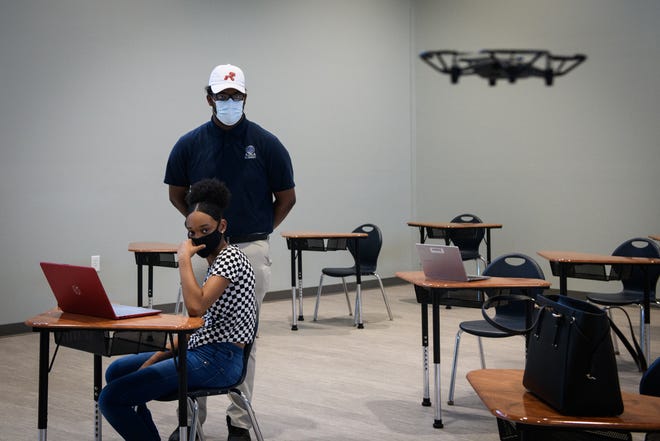
Alpha Academy, a K-12th grade charter school, is providing free drone training to high school students.
“This academy is preparing the next workforce generation,” Jeffries Epps, CEO of STEMERALD City LLC, said.
Students can now earn a drone operator license through the academy’s Drone Remote Pilot Institute. Alpha Academy has partnered with STEMERALD City and Nine Ten Drones LLC to provide the training for staff and students.
“That is a certification that is given to them by the Federal Aviation Administration, which basically permits them to commercially fly drones and charge for their services,” Epps said.
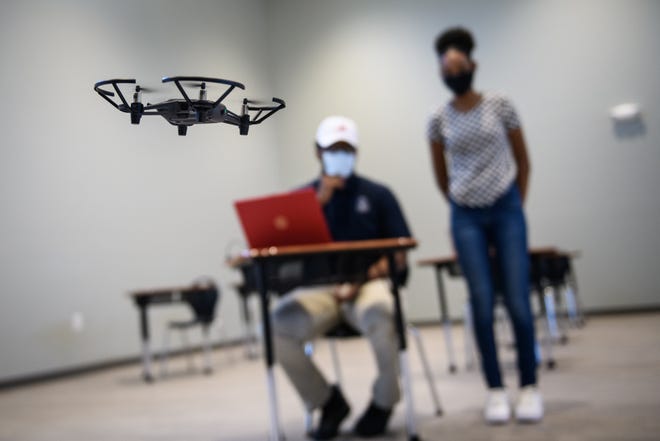
The minimum starting pay for drone pilots is $75 an hour, he said. Many corporate-level companies, such as Amazon, are now using drone delivery. Students are required to program a drone using JavaScript, a scripting language designed to run inside webpages, and build a drone from a kit before they can be certified.
“The final phase now is certification,” Epps said. “We’ve taught them to think like drone pilots, we’ve taught them to build drones, now we are going to teach them the rules and regulations to be certified professional pilots.”

Alpha Academy’s 2nd, 4th, and 5th graders helped to raise our caterpillars into beautiful butterflies. Students enjoyed their new class pets that were provided by the NCSU Cooperative Extension of Cumberland County program.
Mr. Stinson of the Katherine Johnson STEM Institute presented the life cycle presentation to our 2nd grade students before giving each class 3 caterpillars to take care of. After cocooning, Mr. Stinson took the butterflies to their hotel in the STEM Lab and released them on 5/28/21. Thank you to our Elementary students and teachers for taking such good care of them over the last couple of weeks. Also big thank you to NCSU Ag Extension and Jessica Drake for providing a great learning experience for our students that discussed the life cycle of caterpillars in person!

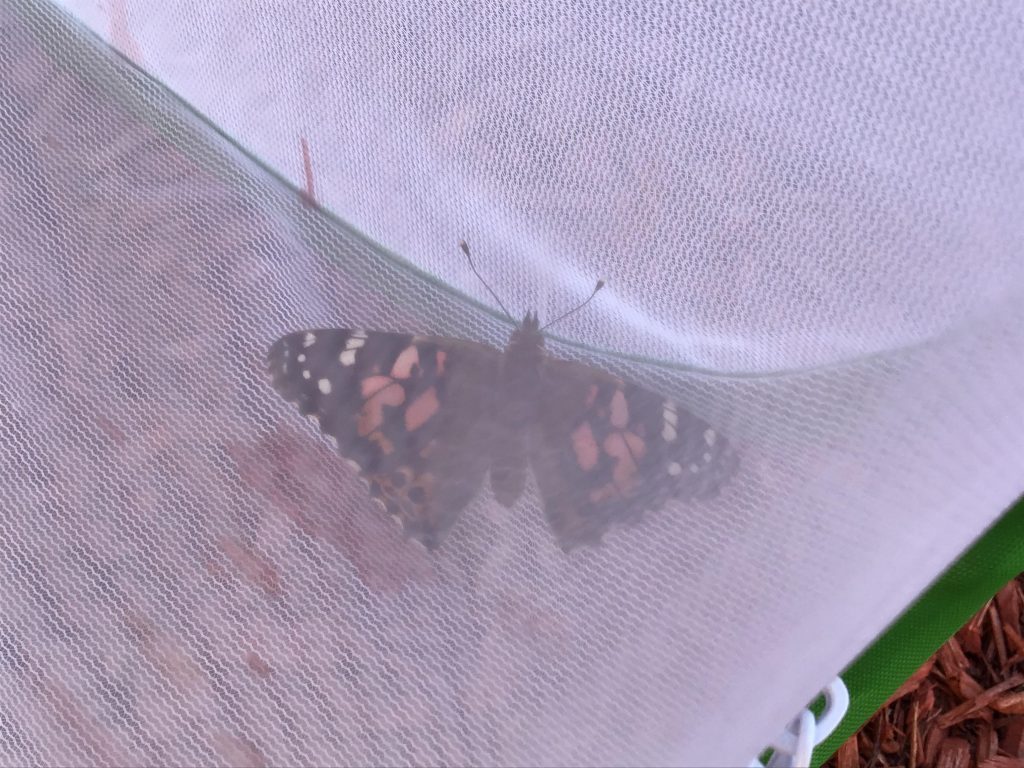

Each year since 1977, ICOM has organised International Museum Day, which represents a unique moment for the international museum community.
The objective of International Museum Day (IMD) is to raise awareness about the fact that, “Museums are an important means of cultural exchange, enrichment of cultures and development of mutual understanding, cooperation and peace among peoples.” Organised on 18 May each year or around this date, the events and activities planned to celebrate International Museum Day can last a day, a weekend or an entire week. IMD was celebrated for the first time 40 years ago. All around the world, more and more museums participate in International Museum Day. Last year, more than 37,000 museums participated in the event in about 158 countries and territories.
Learn More
 Alpha Academy has suffered a tremendous loss. We are sadden by the passing of our beloved, Ms. Harrell. Please continue to pray for her family and Alpha Academy. She will be truly missed.
Alpha Academy has suffered a tremendous loss. We are sadden by the passing of our beloved, Ms. Harrell. Please continue to pray for her family and Alpha Academy. She will be truly missed.
Mrs. Rebecca Monica Harrell age 45 of Raeford departed this life on Sunday, May 2, 2021.
Funeral service (INVITATION ONLY) will be held on Saturday, May 8th at 11:00 A.M. in Christ Worship Center Church in Hope Mills. Viewing will take place on Saturday, May 8th from 10:00 A.M. to 11:00 A.M. at Christ Worship Center Church.
She leaves to cherish her loving memories husband: Chris Harrell; mother: Cassie Tillman; grandmother, Rebecca G. Jackson; children: Efrain Denson, Keshia Harrell, Brianna Denson, and Sophia Harrell; siblings: Dennis Tillman, Bennie Tillman III, Tommy Tillman, Cassandra Scales, Evelena Bunche and Valerie Branch; three grandchildren and a host of other relatives and friends.
Service may be viewed via livestream at cwcconline.org or Christ Worship Center Church facebook page.
Arrangements entrusted to Wiseman Mortuary Inc.
To send flowers to Rebecca’s family, please visit our floral store.

World Book Day changes lives through a love of books and shared reading. Our mission is to promote reading for pleasure, offering every child and young person the opportunity to have a book of their own. Reading for pleasure is the single biggest indicator of a child’s future success – more than their family circumstances, their parents’ educational background or their income. We want to see more children, particularly those from disadvantaged backgrounds, with a life-long habit of reading for pleasure and the improved life chances this brings them. Designated by UNESCO as a worldwide celebration of books and reading, World Book Day is marked in over 100 countries around the globe.
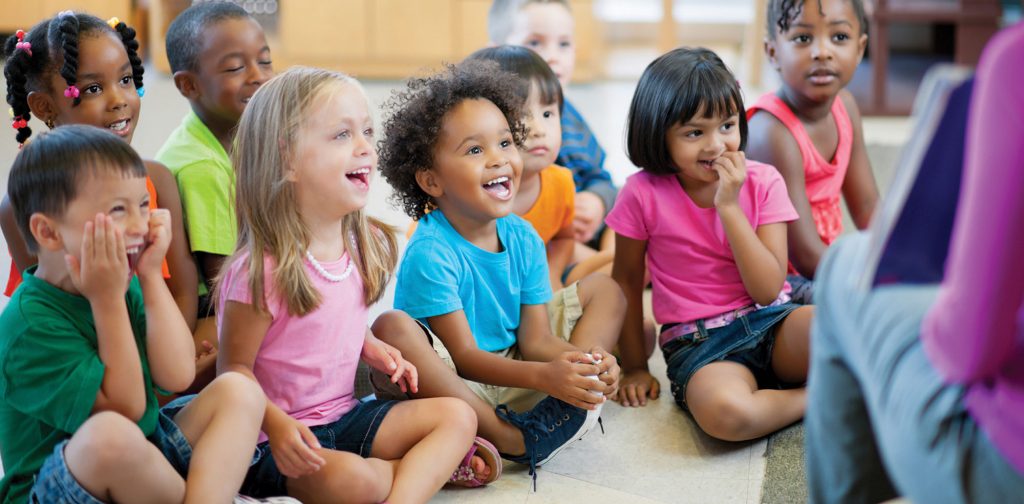
Our school, now more than ever, needs your support and every purchase makes a difference! Shop for: gift wrap, kitchen, home items, candy & more. For our students to participate and sell 10 items. Order Form Entry – Online Only By April 26, 2021 For any questions, please contact Michelle Campbell at mcampbell@alphaacademy.net or (910)223–7711
Shop online and Share with Family and Friends: Email, Text & Post to Social Media!
TO REGISTER: Visit: https://www.supportmyschool.org/ or Text: “Register” to 636–202-1400
School ID: 237711
Student ID: Enter the last 7 digits of your phone number (If you are registering more than one student, just change the last number of your phone number to create a second Student ID) kindle fire
Register above to be entered into a drawing for a chance to win a Kindle Fire Tablet! Share with Family, Friends & Co–Workers

NCHEP is dedicated to ensuring that all children and youth experiencing homelessness have access to the public education to which they are entitled under the federal McKinney-Vento Education of Homeless Children and Youth Assistance Act. NCHEP works towards this goal by ensuring that North Carolina’s state policies are in compliance with federal law, by providing technical assistance to North Carolina’s local homeless education liaisons, and by providing informational and awareness materials to educators and other interested community members throughout North Carolina.
The North Carolina Homeless Education Program (NCHEP) is the Education for Homeless Children and Youths Program for the state of North Carolina. In January 2009, the North Carolina Department of Public Instruction contracted with The SERVE Center at The University of North Carolina at Greensboro.
NCHEP is dedicated to ensuring that all children and youth experiencing homelessness have access to the public education to which they are entitled under the federal McKinney-Vento Education of Homeless Children and Youth Assistance Act. NCHEP works towards this goal by ensuring that North Carolina’s state policies are in compliance with federal law, by providing technical assistance to North Carolina’s local homeless education liaisons, and by providing informational and awareness materials to educators and other interested community members throughout North Carolina.
Initial questions should be directed to the homeless liaison contact listed below:
Brandie Abraham | School Counselor/Dean of Students
Phone: (910)-223-7711 Ext 218
Email: babraham@alphaacademy.net

Dear 8th Grade Parents/Guardians,
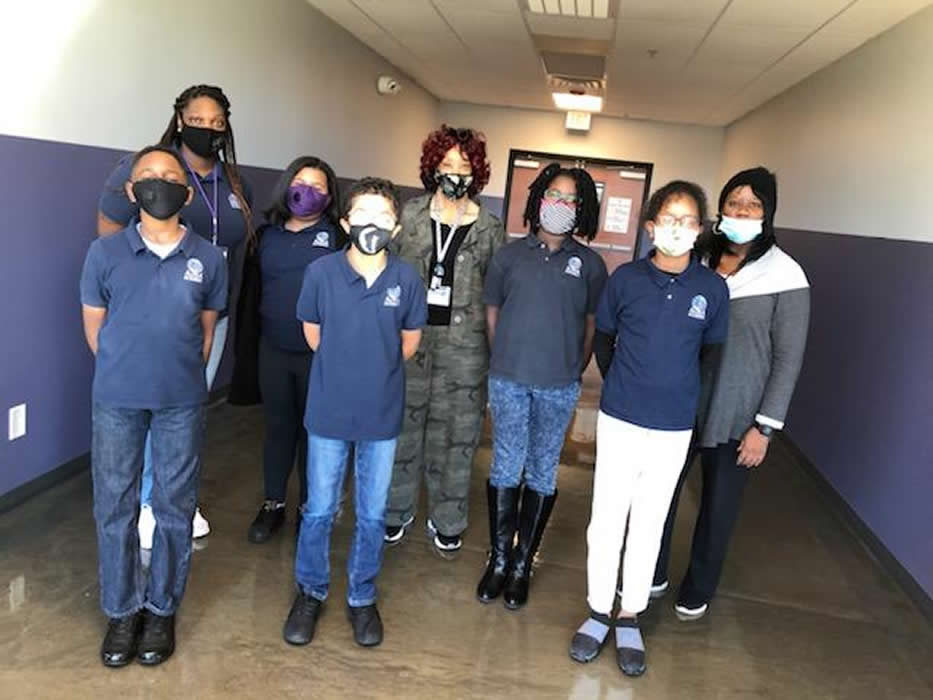
This past Saturday a group of 5th graders competed in the Perennial Math Competition for North Carolina in both the group and individual categories.
This group of students qualify to compete in the National Math Competition in May.

